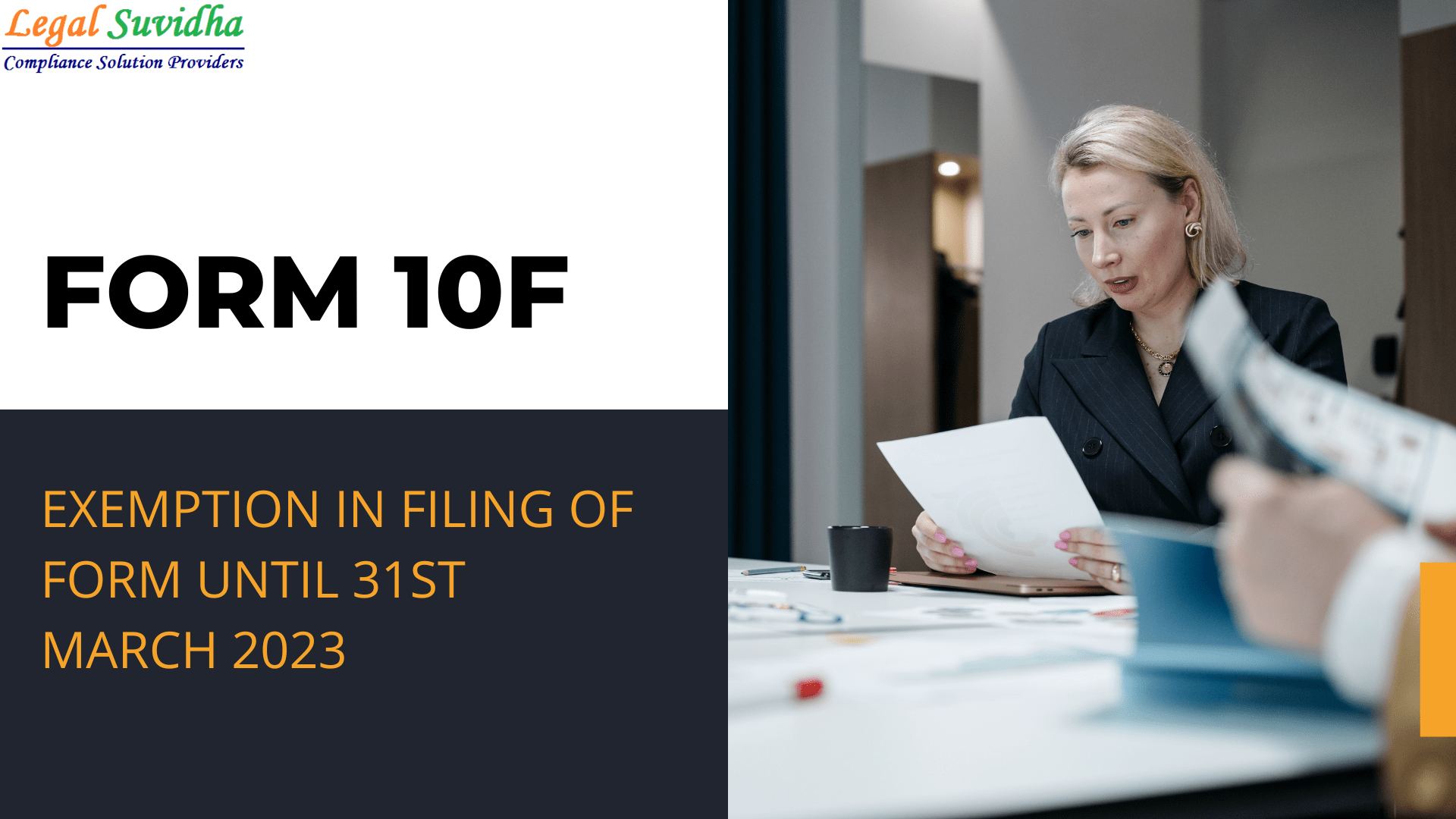Exemption from filing form 10F till 31ST MARCH 2023
Form 10F is an Income tax form that is giving benefits to the non-resident taxpayer by reducing the tax rate from a higher rate to a lower rate of TDS (tax deduction at source) in India.
NRIs can avoid paying double tax as per the Double Tax Avoidance Agreement (DTAA). Usually, Non-Resident Indians (NRI) live abroad but earn income in India. In such cases, it is possible that the income earned in India would attract tax in India as well as in the country of the NRI’s residence.
This means that they would have to pay taxes twice on the same income. As a measure to avoid this, the Double Tax Avoidance Agreement (DTAA) was amended
What is the purpose of Form 10F
In order to claim the benefit of any Tax treaty in respect of any income earned in India, a non-resident is required to furnish certain details in Form 10F along with the Tax Residency Certificate (TRC), as per Section 90(5) of the Income Tax Act, 1961 India has signed Double Taxation Avoidance Agreements (DTAAs) with many countries so that the income is taxed only once. One has to file Form 10F, a tax residency certificate, and self-declaration in the prescribed format to the entity responsible for deducting tax at source.
DTAA Rates
DTAA, signed by India with different countries, fixes a specific rate at which tax has to be deducted from income paid to residents of that country. This means that when NRIs earn an income in India, the TDS applicable would be according to the rates set in the Double Tax Avoidance Agreement with that country.
Income types under DTAA
Under the Double Tax Avoidance Agreement, NRIs don’t have to pay tax twice on the following income earned:
- Services provided in India.
- Salary received in India.
- House property located in India.
- Capital gains on transfer of assets in India.
- Fixed deposits in India.
- Savings bank account in India.
DTAA methods
The benefit of DTAA can be used by two methods:
- Tax credit: Tax relief under this method can be claimed in the country of residence.
- Exemption: Tax relief under this method can be claimed in any one of the two countries.
AMENDMENT
The Central Board of Direct Taxes (CBDT) has given partial relief to non-resident taxpayers by exempting them from mandatory electronic filing of Form 10F until 31 March 2023. Filing this form is required to claim the benefits of a tax treaty.
The Form 10F is signed physically by non-resident taxpayers and furnished along with the tax residency certificate to resident payers for the purpose of determining withholding tax implications.
What are the documents required for making form 10F?
For making form 10F, some documents need to be considered for further process:
- Status (Individual, Company, Firm, etc)
- Permanent Account Number (PAN)*
- Nationality (in case of an individual) or Country or specified territory of incorporation or registration (in the case of others);
- Tax Identification Number of the assessee, in the country of Residence or Unique Tax Identification Number;
- Period for which residential status is applicable;
- Address of the assessee in a country of residence.
- A digital signature certificate is required to verify the form 10F about authentification of the information of form 10f.
What is the validity period of the Certificate?
A TRC is typically valid for one financial year.
.




















